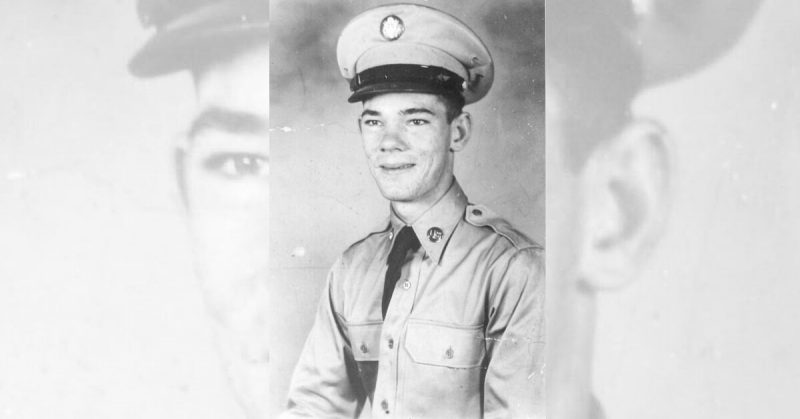Arlington National Cemetery in Washington DC has endless rows of headstones that belong to countless veterans who served the country. On Friday something out of the ordinary happened; a new grave was created in a section long since untouched, but for good reason. A long-lost solder who was killed overseas 65 years ago in brutal and frozen combat was finally being brought home.
In Section 60, with more than 800 other soldiers, sailors and marines, Army Cpl. David J. Wishon Jr. of Baltimore was laid to rest. He received full military honors and finally has what gotten what he deserves for dying in one of this century’s wars.
Army Cpl. David J. Wishon, Jr., 18, of Baltimore, will be buried May 6 in Arlington National Cemetery, near Washington DC. On December 1st 1950, Wishon – who was assigned to Medical Company, 31st Infantry Regiment, 7th Infantry Division – was declared missing in action after his unit was heavily attacked by enemy forces in the vicinity of the Chosin Reservoir, in North Korea. Due to a prolonged lack of information regarding his status, a military review board amended his status to deceased in 1953.
Historians describe the unit as a patchwork force hastily assembled in an attempt to push the North Koreans toward the Yalu River. However, once the Chinese troops showed up from Manchuria, the regiment was surrounded and caught on the east side of the frozen reservoir. The Marines were fighting on the west side. It was snowing, and the temperature dropped to a debilitating 35 degrees below zero.
Chief historian of the Army History Museum, Matthew J. Seelinger, said that it has been estimated that 1,500 United States servicemen were either killed or injured at the Chosin Reservoir out of approximately 2,500 who fought there. Wishon’s medical unit was also wiped out. He was classified as missing on December 1, 1950, but three years later there was still no additional information ascertained in regards to his status. The military review board declared Wishon dead, but the nation never forgot about him.
North Korea returned 208 boxes of “commingled” human remains to the U. S. in the early years of the 1990s. Another joint U.S. and North Korea recovery effort brought home more remains. As a result, at least 600 more American servicemen were identified.
Based on circumstantial evidence and two forms of DNA analysis, Wishon’s identity was confirmed. Air Force Lt. Col. Holly Slaughter, of the Defense Department’s POW/MIA Accounting Agency, said the DNA was a match of mitochondrial DNA from two of his sisters. His family members did not offer any comments.
There are still 7,800 U. S. Korean War veterans who remain unaccounted for to this day. In October 2000, a joint North Korean-U.S. team recovered additional human remains from a reported burial site in Kujang, North Korea. There are still efforts being made to recover more men.
Slaughter describes the process as difficult since so much time has passed. He compares sifting through all the bone chips and other evidence to trying to complete a puzzle without a picture to guide you. At the service, six horses (three with no rider) pulled a caisson carrying Wishon’s casket. It was covered in an American flag and wrapped in plastic to protect it from the cold and heavy rain. Next, the Army’s Old Guard fired a three-shot rifle volley to honor the serviceman. A military band was on site, and a bugler played “America the Beautiful” and “Taps.” About twelve relatives were at the ceremony, including Wishon’s sister, Celia Gray of Essex, MD.
A small group of tourists watched from afar as a military chaplain conducted his part of the service. The acting superintendent of the cemetery also paid her respects, and a member from the South Korean Army expressed gratitude to the family members who gathered to mourn. Wishon’s funeral was one of 28 other funerals conducted that day at the cemetery.
